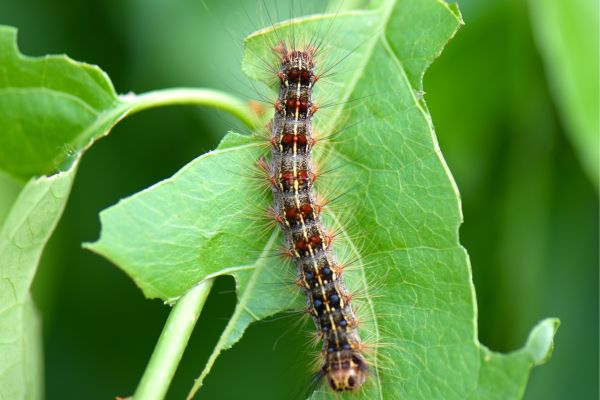Your cart is currently empty!

23 Jun Identifying The Stages Of The Spongy Moth Life Cycle
In the secret realms of nature, where magic and mystery intertwine, a tale of transformation unfolds, showcasing the extraordinary life cycles of a notorious moth species: The Spongy Moth.
These captivating creatures have captured the imagination of scientists and nature enthusiasts alike, enchanting us with their mesmerizing metamorphoses. Within the intricate tapestry of nature’s cycles, the Spongy Moth emerges as an invasive force, capable of wreaking havoc on forests and trees. Their life cycle unveils a story of resilience and destruction, as they transition from delicate eggs to voracious caterpillars, enshrouded in cocoons, before emerging as majestic adult moths.
Join us on a journey of discovery as we delve into the enigmatic world of these moth species and unravel the mysteries of their remarkable life cycles. Understanding their life cycle is crucial for managing their populations and preventing further destruction. The Spongy Moth life cycle can be divided into four stages: egg, larva, pupa, and adult.
1. Egg Stage
Spongy Moth eggs are round and about the size of a pencil eraser. They are usually laid in clusters on tree bark or other surfaces. Females lay between 100-1000 eggs in a single mass, which hatch in the spring when temperatures rise above freezing. These masses can be found on trees, outdoor furniture, firewood piles, and even cars.
2. Larval Stage
The larval stage is the most destructive phase of the Spongy Moth life cycle. Caterpillars hatch from the eggs and begin feeding on the leaves and needles of trees and shrubs. They moult several times as they grow, shedding their skin to reveal a new one underneath. Early instars have black heads and bodies covered in long hairs, while later instars have lighter-coloured bodies with fewer hairs.
During this stage, caterpillars can cause severe defoliation of host plants, leading to reduced growth rates or even death of individual trees or entire forests if left unchecked.
3. Pupal Stage
After about six weeks of feeding on plant material during the larval stage, caterpillars spin cocoons made up of silk fibres mixed with body hair or other debris such as leaves or twigs found around them. Inside these cocoons lie pupae undergoing metamorphosis into adult moths.
The pupal stage lasts for approximately two weeks before emerging as an adult moth, ready to mate with others around it during its short lifespan.
4. Adult Stage
Adult Spongy Moths are relatively nondescript, with brownish-grey wings marked by wavy lines. They do not feed during their short lifespan, which lasts only a few days to a week. The primary goal of adult Spongy Moths is to mate and lay eggs for the next generation.
The exploration of the life cycles of Spongy Moths has provided us with a profound understanding of these fascinating creatures and their impact on the natural world. From the moment the eggs are laid with precision to the voracious feeding of the caterpillars, the transformative pupal stage, and the emergence of the adult moths, each stage offers a glimpse into the intricate mechanisms of nature’s wonders.
After delving into the captivating world of Spongy Moths and their impact on our precious forests, it is clear that action is needed to safeguard the vitality of our ecosystems. As responsible stewards of the earth, we have the power to make a difference by investing in innovative solutions that promote sustainable practices and protect our natural habitats.
One such solution is the V9 Tree Belt, available through the Environmental Factor website. This revolutionary product offers a proactive approach to mitigating the damage caused by Spongy Moth caterpillars and preserving the health of our trees.
The V9 Tree Belt acts as a physical barrier, preventing Spongy Moth caterpillars from climbing trees and devouring their foliage. With its innovative design and durable materials, this tree belt effectively disrupts the caterpillars’ path and disrupts their destructive feeding habits. By investing in the V9 Tree Belt, you contribute to the protection of our forests and the preservation of their ecological integrity.
Visit the Environmental Factor website today to learn more about the V9 Tree Belt and take the first step towards becoming an environmental champion. Remember, every action, no matter how small, has the power to create a lasting impact. By investing in the V9 Tree Belt and embracing a commitment to environmental stewardship, we pave the way for a greener, more sustainable future. Let us stand united in our efforts to protect our forests, for they are the lifeblood of our planet.


